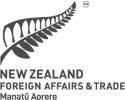On this page
CEP upgrade negotiations
The Closer Economic Partnership (CEP) with Singapore was one of our most swiftly concluded free trade agreements, taking less than a year to complete negotiations. Signed in 2000, the CEP entered into force in 2001. Singapore is now New Zealand’s largest trading partner in the Southeast Asia region, with NZ$10.31 billion of two-way trade in the year ending December 2024. Singapore is also the fourth-largest source of foreign investment into New Zealand.
Our trade policy and practice has evolved considerably since the CEP was first negotiated. As two open and modern economies with considerable experience in free trade agreements, New Zealand and Singapore sought to upgrade the existing agreement so that it could serve as a benchmark and template for other negotiations.
The CEP Upgrade entered into force on 1 January 2020. Read the press release announcing the upgrade.(external link)
New Zealand and Singapore are also parties to the:
- Trans-Pacific Strategic Economic Partnership Agreement (P4); ASEAN Australia New Zealand Free Trade Area (AANZFTA);
- Regional Comprehensive Economic Partnership (RCEP);
- Indo-Pacific Economic Framework for Prosperity (IPEF); and
- Comprehensive and Progressive Agreement for Trans-Pacific Partnership (CPTPP).
What is in the upgrade?
Given the high-quality market access outcomes New Zealand has already secured for our exporters in other trade agreements with Singapore, the key benefit of the upgrade to the CEP is strategic. Singapore and New Zealand are both small, like-minded advanced economies which rely on the international rules based system. The upgrade reinforces the role both countries play as leaders in trade and economic integration, serving as a model for the wider Indo-Pacific in the years to come.
The CEP upgrade consists of a negotiated package of binding and non-binding commitments between New Zealand and Singapore:
- a legally binding Protocol to Amend the Agreement between New Zealand and Singapore on Closer Economic Partnership (the Protocol)
- a legally binding Mutual Recognition Agreement on Conformity Assessment between the Government of New Zealand and the Government of the Republic of Singapore (the MRA)
- a non-legally binding side-letter on professional qualification recognition; and
- a non-legally binding side-letter confirming the relationship between the Protocol and New Zealand’s existing free trade agreements with Singapore.
The upgrade constitutes the first wide-ranging upgrade of a free trade agreement to which New Zealand is party to. Taken as a whole, the CEP upgrade will deliver:
- improved market access for New Zealanders into Singapore through enhanced visa access for service suppliers and intra-corporate transferees
- modernised rules covering trade in goods (including customs procedures and trade facilitation, and rules of origin)
- modern frameworks to address non-tariff barriers; including (a) sector-specific frameworks for wine and distilled spirits, cosmetics, pharmaceuticals and medical devices, and (b) implementing arrangements relating to aspects of the Sanitary and Phytosanitary Chapter of the CEP
- a new framework to enable regulatory cooperation
- updated competition and consumer protection rules
- targeted improvements to investment provisions; and
- new rules covering electronic commerce.
Read more about the costs and benefits of the Protocol and the MRA in the National Interest Analysis (NIA).
The changes
The CEP upgrade changes the structure of the existing free trade agreement to align with New Zealand and Singapore’s modern treaty practice and to improve the accessibility and readability of the Agreement.
The table below identifies chapters and annexes of the existing CEP that are unchanged other than numbering, chapters and annexes that have been amended in a minor way for example updating definitions or review provisions, those that are substantively amended, and chapters and annexes that are new:
| Area | Change | Existing numbering | New numbering |
|---|---|---|---|
| Objectives and General Definitions | Part 1 | Chapter 1 | |
| Trade in Goods | Updated | Part 3 (Article 4, 6-9) | Chapter 2 |
| Rules of Origin | Updated | Part 3 (Article 5) | Chapter 3 |
| Product Specific Rules | Updated | Annex 1 | Annex 3.1 |
| Customs Procedure and Trade Facilitation | Updated | Part 4 | Chapter 4 |
| Sanitary and Phytosanitary Measures | Updated | Part 7 | Chapter 5 |
| Technical Barriers to Trade | Updated | Part 7 | Chapter 6 |
| Electrical and Electronic Equipment | Minor | Annex 4.1 | Annex 6.1 |
| Wine and Distilled Spirits | New | - | Annex 6.2 |
| Pharmaceuticals | New | - | Annex 6.3 |
| Cosmetics | New | - | Annex 6.4 |
| Medical devices | New | - | Annex 6.5 |
| Investment | Updated | Part 6 | Chapter 7 |
| Investment limitations | No change | Annex 3 | Annex 7.2 |
| Services | Minor | Part 5 | Chapter 8 |
| New Zealand’s Services Commitments | No change | Annex 2 | Annex 8.1.1 |
| Singapore’s Services Commitments | Updated | Annex 2 | Annex 8.1.2 |
| E-Commerce | New | - | Chapter 9 |
| Government Procurement | No change | Part 8 | Chapter 10 |
| Competition and Consumer Protection | Updated | Part 2 | Chapter 11 |
| Intellectual Property | No change | Part 9 | Chapter 12 |
| Regulatory Cooperation | New | - | Chapter 13 |
| Dispute Settlement | No change | Part 10 | Chapter 14 |
| Institutional Provisions | New | - | Chapter 15 |
| General Provisions | Updated | Part 11 | Chapter 16 |
| Mutual Recognition Agreement on Conformity Assessment | New | - | Separate Agreement |
Highlights of the existing CEP
- Duty-free goods made in New Zealand or Singapore can be traded between the two countries duty-free, where the product meets the Rules of Origin requirements.
- Better access to Singapore's service sector markets such as architecture, engineering, telecommunications, finance, education and environmental services.
- Easier for New Zealanders to buy services from Singapore such as in engineering, computing, transport, dental, environment and some business services.
- Easier entry into Singapore for business visitors and temporary residency for corporate employees.
- Government procurement is included in the Agreement ensuring New Zealand businesses can compete with Singapore businesses for government contracts on a level playing field.
- Reduced business costs and red tape around customs processing, competition law and technical and quarantine standards.
- A clear process to settle disputes related to the CEP.
Useful links
Use the Tariff Finder(external link) to find out what tariffs apply on exports to Singapore
NZTE's Market Guide for Singapore(external link)
New Zealand Trade Dashboard (external link) for trade statistics(external link)
Contact us
If you want to know more about the NZ-Singapore CEP, contact us anytime by email or mail. Email us at FTA_outreach@mfat.govt.nz to continue to share your views and register your interest in future engagement opportunities, or at exports@mfat.govt.nz for queries about the Agreement and imports from and exports to Singapore.
Mail:
Coordinator Singapore CEP
Ministry of Foreign Affairs and Trade
Private Bag 18901
Wellington

